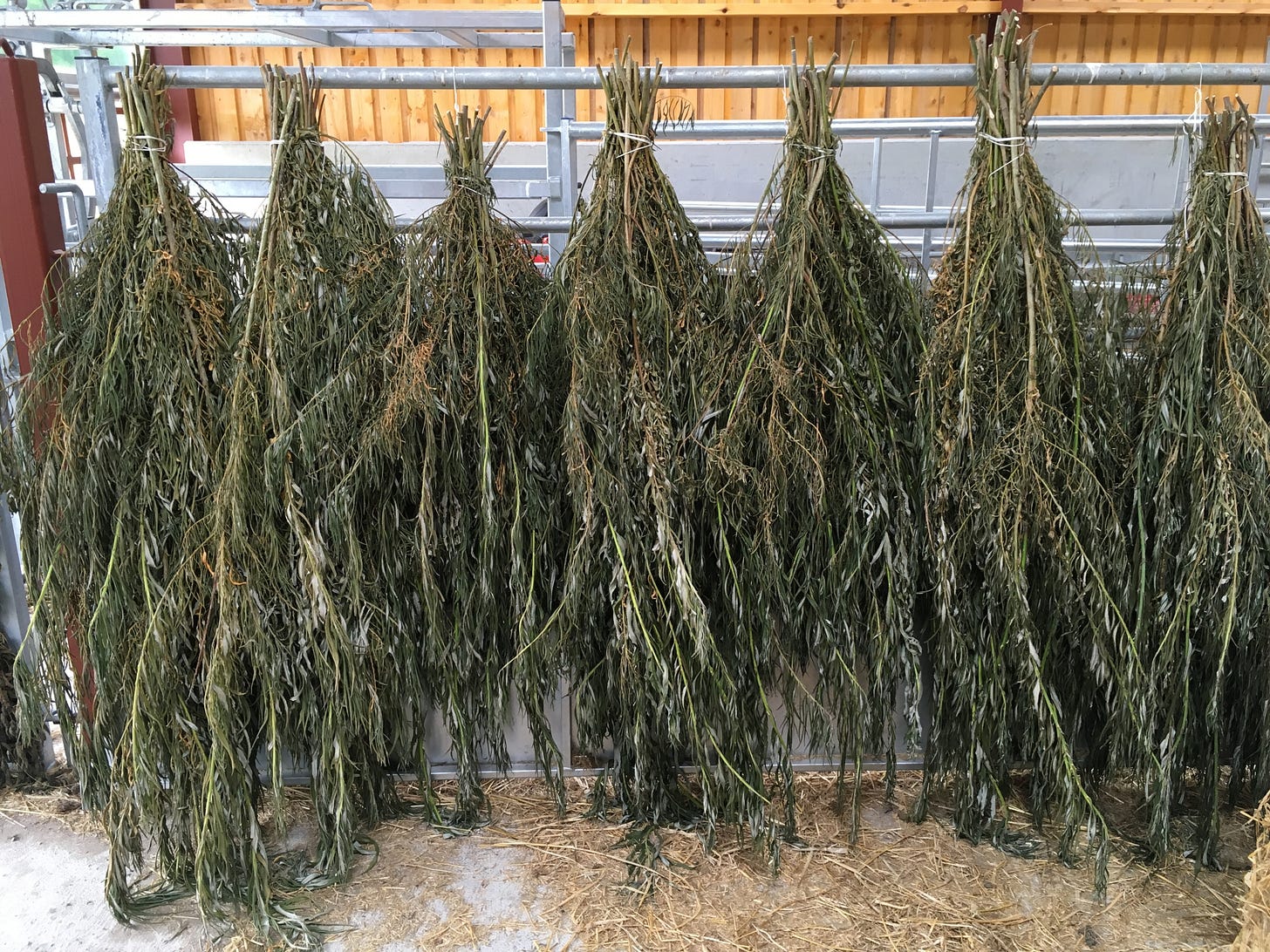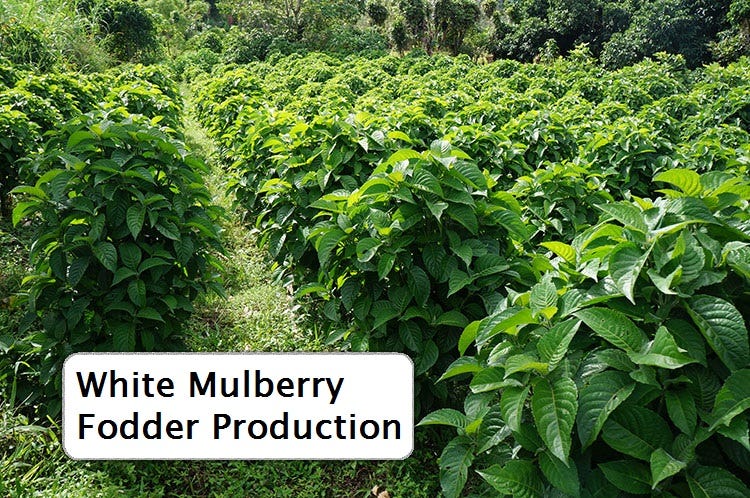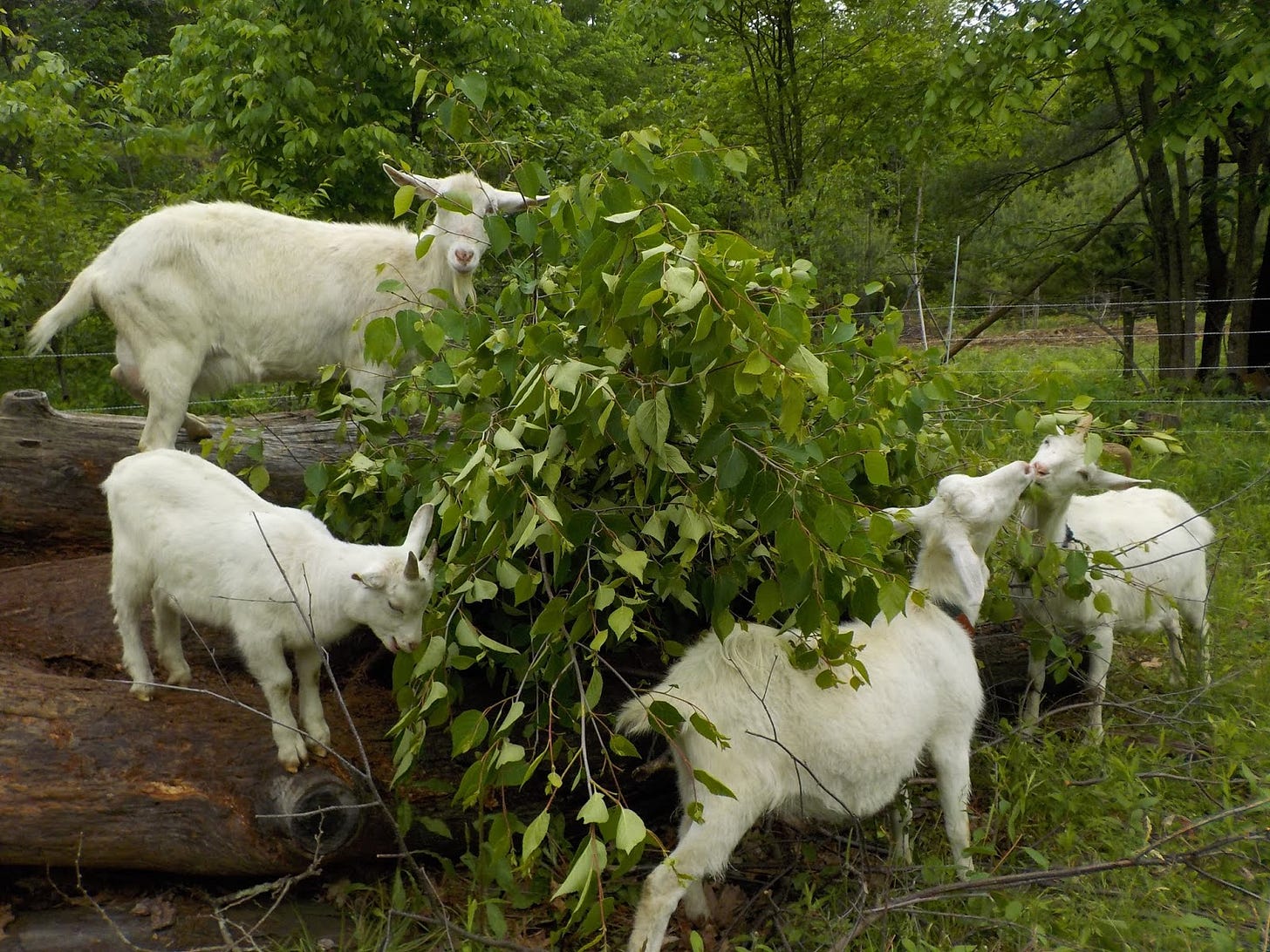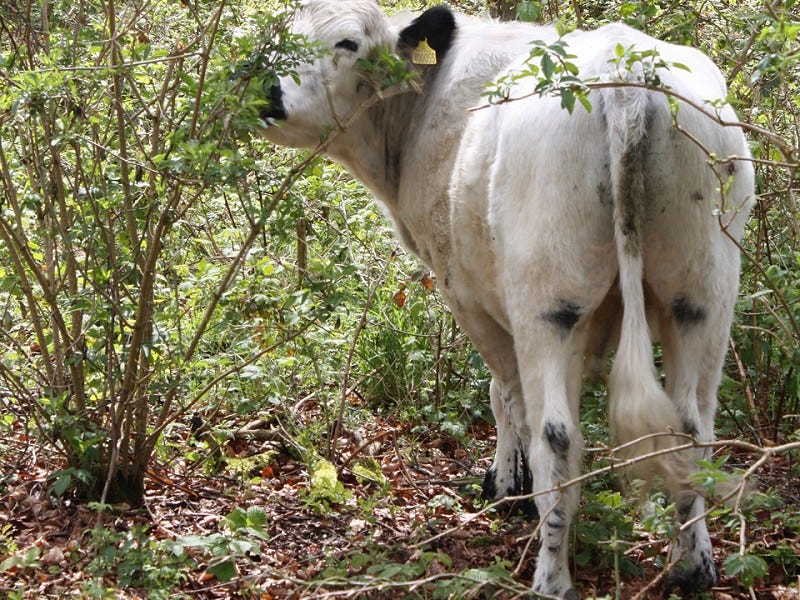Beyond Grass: Exploring the World of Tree Hay/Fodder
Tree fodder fed farms before grass hay was developed
We’ve spent some time in different articles diving into the unique benefits of different tree types, different ways to lay out those same species, the pros and cons of nut and fruit trees, and how these can all benefit both humans and non-humans for consumption. Today, we’re going to dive into a lesser-known area of tree crops, and that is the leaves themselves— tree hay.
Tree fodder, or tree hay, is exactly what it sounds like; using the leaves of trees as feed, stored over the winter season in a form similar to hay. And really, this is just an extension of feeding livestock leaves right from the trees if you’d choose. There are a number of ways to feed leaves to livestock, from fodder blocks to chop and drop and silage and tree hay. One of the things you’ll find if you check online, is that, unlike many other esoteric parts of agriculture, there isn’t a book that is treated like the bible of the subject matter, although since this was released as a podcast episode, one particular book has since come out, which appears to be thoroughly researched and a solid text for folks learning about this for the first time. The name is “Coppice Agroforestry: Tending Trees for Product, Profit, and Woodland Ecology” from Mark Krawczyk, whom we interviewed on the podcast a few years back (listen here).
Tree hay was so engrained in common knowledge in most pre-capitalist societies that until only a few generations ago, the idea that it would need to be written down seemed crazy. Not only was it common knowledge, but it was the first major management tool by people across the globe to manipulate the gluts of the seasons for livestock. Before we had grass hay, we had tree hay. And now, in many ways, we’re starting from scratch again. This becomes really obvious when you start talking to folks who are doing it, because for example, black locust is a very common feed for animals because of its high protein content, but many agricultural extension schools have it listed as inedible and dangerous for livestock. And that’s not the only one. We don’t have written records of what was done for many species, and further, there is little interest in researching the matter through traditional academic institutions. So it’s on us, the commoner, to relearn and develop this knowledge. Fortunately, there are people doing this hard work.

Before we get into what can and can’t be used, we need to understand some basic concepts around feeding tree hay before it matters whether or not a species is edible. The first thing I want to cover is the nutritional content of tree hay. And I want to start that by focusing on a key component of all animal diets— protein. What exactly is protein? Protein is formed with amino acids, a key component of which is nitrogen. Nitrogen is so important that we can often calculate protein content simply by knowing how much nitrogen is in something; about 16% of any protein is made up of nitrogen. To invert that, we can multiply the amount of nitrogen in something, say grass or leaves, and multiply it by 6.25 to get a rough idea of how much protein is in something.
Of course, that doesn’t mean it’s fully digestible by the animal eating the grass or hay. This digestibility is often correlated with the age of the plant being consumed. With grasses & forbs, the digestibility & palatability is incredibly impacted by the age of those greens. With leaves, however, it’s much less severe. While fresh, young green shoots and buds of leaves are more palatable than older leaves. Once mature, leaves very slowly become less palatable or less digestible. The leaves aren’t the plant’s primary growth mechanism, whereas, for grass or clover, the growth of the green, young pieces is the primary factor in plant health and building the pathways for nutrients to flow. For us, this is incredibly useful, as it allows for harvesting when convenient, and not within a short window when, for example, grasses need to be harvested before they build up too much lignin and when the season is dry enough for harvesting.
Tthe other obvious benefit of tree hay is the ability of it to add depth to a landscape in terms of green production. Let’s take a typical, full-sized tree. It can produce roughly 500 pounds of dried leaves a year. Let’s just say we harvested one-fifth of that, 100 pounds. That same spot, say, a 20-by-20-foot space or so, as grass, produces around 40 pounds of dry matter.1 The benefit is that you’re adding a third dimension of growth and you’re adding a bigger root system to convert energy (and of course, there’s a worthwhile discussion about where prairie makes more sense, but that’s a conversation for another day). This probably isn’t super surprising, but adding some numbers to it I think helps contextualize the massive advantage of using tree hay, especially if that management process can also support grass groundcover that can also be grazed.
Let’s talk about harvesting. There are a couple of methodologies associated with harvesting tree hay. If we recall, lignin builds up pretty quickly within the leaves and doesn’t get significantly worse with the season, so there’s no rush to harvest except before they dry and fall from the trees. While you’ll be possibly storing some leaves from the trees for the winter months, it’s a bit different to harvest in this practice versus the natural process of dropping leaves. When branches drop their leaves, they steal as much of the nutritional value as possible from the leaves before allowing them to fall, while when we harvest branches with fresh leaves, there are no attempts by the tree to return those nutrients from the leaves. While the leaves dry and wilt during storage, you’ll notice the leaves dry with more color and less brittleness than the leaves on the ground. It’s the nutritional value stored that retains a sense of vitality within the leaves when stored as tree hay
.What this means is we can harvest at almost any time during the year to get the same quality of leaves, but then we have to think about the health of the tree. There are a few different perspectives that I think come up when we consider tree health when it comes to harvesting tree hay. It all starts, really, with considering our goals for the tree. Are we harvesting branches and wanting them to come back bigger next year? Are we hoping the tree stays the same size? Are we selectively picking branches to thin the tree because maybe it’s a fruit tree that needs better light penetration? Are we hoping to get the tree larger for a timber harvest in the following years? If so, are we looking for wood for construction, meaning as few knots as possible, which means removing branches early on? Each of these will lead to different times you might want to harvest.
So, let's start with that early spring harvest. You’d want to harvest in the spring with trees with extremely quick growth, like willow, that you’re confident will bounce back. Species that coppice well are good for a spring harvest. Further, you’d want to harvest on trees you’re thinning in the spring if you’re seeing new shoots spring out somewhere that will block sunlight penetration to the lower parts of the tree. Generally, you should have already thinned the tree the previous winter, although some people advocate for summer pruning for fruit trees, although I don’t personally like the idea of letting a tree expend so much energy on growth that you’re cutting if you don’t have to, so nip it in the bud early in the spring.
Summer harvests are great for trees that you’re trying to keep small, or possibly even as a second harvest for a species like willow. Further, trees that are slow growing like oaks will have only put out a meaningful amount of new growth by this point and there’s just no way to harvest without taking off multiple years of growth without waiting this late. If you’re looking to take multiple years of growth, that’s fine, and we covered that a bit in an earlier piece on pollarding, but in terms of sustainably harvesting from singular trees, that isn’t a solution. Generally, we don’t want to take off multiple years of growth unless we’re pollarding or coppicing; it isn’t worth the energy loss to do so.
When we think about cutting tree hay, we generally want to try to stick with younger branches, as most livestock will eat the tender branches and not leave the otherwise wasted caloric expenditure of the tree unused. The latest folks generally harvest is about 3 months before your first frost date. Any later and the tree won’t have enough time to recover. The last thing you want to do is kill a tree with a late harvest for a couple of days worth of feed.
Coppicing and pollarding are primarily done during the winter after the leaves have fallen— the whole idea is that the nutrients have returned to the roots for the winter, while with tree hay we’re trying to do the opposite; store the nutrients in the leaves before they can return to the roots. This is the same reason we’re not raking leaves into piles to feed to livestock either. Will they eat them? Sometimes. Will it be nutritionally dense? No.
Fodder trees can only be pruned when the diameter of the stem at 20 inches above the ground level is at least 3 inches. The altitude, soil fertility, rainfall, and the type of tree determine how fast the tree grows and by proxy the period in which the stem reaches the required thickness. For fast-growing trees, the required diameter— 3 inches— will in general be reached within a couple of years.2 After the first pruning, the following prunings or loppings should not be done too regularly, otherwise, the yields per pruning and the life span of the tree will be reduced. You should experiment to experience how a tree copes with a certain pruning frequency.
Much of this knowledge has been lost, and it’s one of the few areas where everyday people like you and me can relearn something that’s been largely forgotten. These intervals may be longer or shorter depending on the climate, rainfall, soil fertility, and altitude. In general, avoid cutting trees too often or at a low height at the beginning, during, and immediately after the wet season. Too much pruning of trees during these periods exposes them to a high chance of disease attack. It is wise to let the trees grow and save the leaves for the dry season. In dry areas, it is useful to allow the stem to reach more than 4 inches in diameter before pruning or allowing browsing by livestock. The main root is then supposed to have grown deep enough to reach the lower water table, allowing the tree to get enough water during the dry season. Afterwards, pruning should not exceed 2-3 cuts per year to be sure that the strength of the tree is not lost, although three is aggressive.

In areas with long dry seasons, water shortage can lead to the loss of fodder material, unless cutting times are chosen wisely. If the aim is to maximize the yield of fodder at the height of the dry season, experiments have shown that the final wet season cut should be made six months earlier. If your rainy season starts in December, aim for a June leaf harvest.
Now, I say leaves, but it’s not always necessarily just leaves. If you’re dealing with locusts or other pod-based trees, catalpa being another native example here in New England, pods, seeds, and small twigs may also be fed. The utility of the feed is expansive too, and can be used from fresh cut to stored for a season or more. What this means is that you don’t have to cure the fodder for it to be palatable for livestock. While that might seem obvious, it’s important because a lot of folks simply don’t have the time or space to store tree fodder.
Not only can the fodder tree leaves be browsed right off of the tree, but you can also ‘cut and carry’ to animals. Browsing is possible but it should be done rotationally. This means that the trees are browsed for a couple of days and left for six or more weeks to recover, much like a pasture with a longer recovery time. Overgrazing should be avoided otherwise fodder trees will die!
The cut-and-carry system is recommended even though it involves a lot of work. For most tree species, the fodder leaves should be fed to the animals within an hour of harvesting if you’re directly feeding. Otherwise, you’ll want to think about storing them just like if you were going to store them for the winter, which means cool, indirect sunlight, and good airflow.3 This process of cut-and-carry is a good way to thin trees to get sunlight penetration in more dense forests over systems that are transitioning from fields to more of a silvopasture system. We’ve talked about it before, the goal isn’t to try to convert a system overnight. Not only is it nearly physically impossible to address something like a forest into a silvopasture site in a short period, but the biology of the site; not just the trees and grasses but the bacteria and fungi, need time to evolve with the site’s changing sunlight penetration, evapotranspirational changes, water absorption changes, new species, and so on. It takes years to get these things in balance. Decades.
The alternative is to dry for storage. There’s a bit of interpretation of this process, as there hasn’t been extensive research done on measuring the quality or palatability of the tree hay based on different drying methods, but the general idea is to dry slowly in bunches that are tied comfortably tightly, not super tight but firm in collections a few feet in diameter. These can be stored somewhere dry, in a barn, or a shed, preferably somewhere with some airflow to keep moisture out and mold from growing.4
When we cut tree hay, we do this most often based on the idea of regeneration, that the tree will replace those branches. In this process, we want to keep the ‘infrastructure’ of the tree in place and what that infrastructure is, is based on what we want to harvest, right? If we only want leaves, we want to leave as many branches that will help produce leaves as possible. If we want beanpoles, we want to leave as much of the trunk of the tree as possible above browsing height to grow long, straight sticks. If we want firewood, we want to give the main trunks as much room and as little competition as possible. If we want all of the above, it means careful, thoughtful planning.
Alternatively, we can use a different practice called strip leafing, which means quite like what it sounds, stripping all of the leaves from the branches to leave the branch structure intact, which the trees often bounce back more quickly from. This is one way to give a better likelihood of getting two harvests in one year, although I wouldn't recommend doing this repeatedly as the tree will eventually start to respond negatively. When harvesting in this practice, the leaves are traditionally stored in sacks or used in tree silage, which is a slightly fermented feed to increase the storability of the leaves.
At this point, we’ve only really focused on tree hay as something we enable as the farmer, land manager, or whatever. But how do we keep our animals from taking a snack off of our trees? This is managed by keeping branches above their browse height, which is exactly what it sounds like, the maximum height at which they can reach the leaves. For most animals, it’s around 6 feet, and higher for larger species. Yes, the tiny 3-foot sheep or goat will reach up about 6 feet for a delicious snack. By definition, if we are cutting tree fodder as a primary practice for the tree species and not simply to thin a tree for light penetration or airflow, then the tree is probably going to be getting pollarded or coppiced on a specific cycle.
Much like traditional feed for livestock like grass and forbs, different trees— much like different grasses— are not only better and worse for different species, but they also have different values. Alfalfa and clover are great because they’re high in protein, but that can also cause bloat, and it’s important to have a various mix of species to feed your livestock. The same is true with tree hay, although there are many advantages with tree hay that don’t exist in grasslands. Black locust, a nitrogen-fixing tree that is native to North America is very nutritionally similar to alfalfa and provides an incredible volume of forage while also being high in protein and also improving the quality of the soil for nitrogen-heavy feeders by fixing nitrogen. But, much like alfalfa, it does have the bloat issue.
Willow, another species that exists across the globe, has fast-growing, digestible biomass for animals, similar to most grasses that don’t have any uniquely valuable benefits other than caloric intake, and also has an added benefit of high tannin content and other chemical properties that help reduce parasite load, a constant battle for most farmers.5 While this can be toxic in large volumes, grazers quickly learn to limit their intake if necessary. It could be considered similar to something like triticale.
Poplars, which include aspens and cottonwoods, fall into the same family as willow, so it has many similar properties, but without the benefits or risks of willow, depending on how you want to look at it. They create massive biomass and are a great way to fill caloric intake quickly. The nutritional value falls somewhere similar to a timothy grass or a fescue.
One other particular species worth considering and incorporating regardless of location is mulberry. Mulberry is incredibly digestible and has high protein content, while also dropping an incredible amount of fruit. While we have been talking about polygastric species, meaning grazers like sheep, cows, and goats, mulberry fodder is so digestible monograstric species like pigs and chickens will gladly utilize the leaves as forage, and places in Asia are experimenting with pelletized mulberry leaves, something I had wanted to do for several years and as I was putting together this content found out that I had been beaten to it. Further, mulberry has several other health properties for livestock that make it particularly appealing.6
Now how does all this fit into an actual productive system? Well, it’s complicated.
The biggest challenge, I think, is for people to figure out a way to work these things in. Do you want to allow your animals a quick graze? Then that means thinking about how to work in that particular paddock at the right time of year. Additionally, calculating how many pounds of fodder they’re getting is much more of an art than science and you can only really figure it out by doing and observing.
So, what can you do? Once your trees are big enough to start lopping them back, give it a shot. See how quickly they devour the material and you’ll get an eye pretty quickly at what they’ll eat and won’t eat. Some animals will eat young bark, others the whole small branches, and you’ll find out pretty quickly that most livestock won’t eat any leaves that fall into the grasses that have been grazed already, meaning you have to either try to keep your tree fodder upright, only feed tree hay in new pasture, or rotate the tree hay while it’s still fresh so they’ll consume all of it. None of these is ideal, right? This is where having other, bigger trees that they can’t do too much damage is great; you can lean it against these trees, or try to use a rotating feed system, which doesn’t exist but you can get creative.
In terms of actually growing tree hay species, many of them can be grown in super dense clusters because you know they’ll never get larger than 20 or so feet, and the dense leaf cover won’t exist for very long, so you can plant them even as close as a foot apart, creating dense thickets. These can operate as windbreaks as well as for tree hay and habitat for native birds if you work with native species— which for me can include black willow and quaking aspen.
The reality is, unlike grasses, to this point we haven’t spent much time thinking about tree breeding in terms of edible leaves for livestock. There’s an incredible amount we can still do today in terms of breeding for more forageable leaves, higher production trees, and better coppicing varieties. New research is still coming out and there’s more to be done. There’s plenty to experiment and many ways to contribute to the continued development of these resources!
If you’ve enjoyed this piece, which is equal to a 17-page chapter, of (so far) a 976 page book with 632 sources, you can support our work in a number of ways. The first is by sharing this article with folks you think would find it interesting. Second, you can listen to the audio version of this episode, #66, of the Poor Proles Almanac wherever you get your podcasts. If you’d like to financially support the project, and get exclusive access to our limited paywalled content, you can become a paid subscriber on Substack or Patreon, which will both give you access to the paywalled content and in the case of Patreon, early access to the audio episodes as well.
Gabriel, S., & Toensmeier, E. (2018). Silvopasture a guide to managing grazing animals, forage crops, and trees in a temperate farm ecosystem. Chelsea Green Publishing.
https://littleavalonfarm.com/making-tree-hay-for-winter-feed/
Read, Helen J. “A study of practical pollarding techniques in northern Europe” 2003. https://www.ancienttreeforum.co.uk/wp-content/uploads/2017/05/A-study-of-practical-pollarding-techniques-in-northern.pdf
Mukherjee, A., Kar, I., & Patra, A. K. (2023). Understanding anthelmintic resistance in livestock using “OMICS” approaches. Environmental Science and Pollution Research, 30(60), 125439–125463. https://doi.org/10.1007/s11356-023-31045-y
Wang, B., & Luo, H. (2021). Effects of mulberry leaf silage on antioxidant and immunomodulatory activity and rumen bacterial community of Lambs. BMC Microbiology, 21(1). https://doi.org/10.1186/s12866-021-02311-1








I am looking for information on creating (from on farm)high quality feed for dairy sheep. Mainly information on the comparison between things like Nettles vs. Kelp. I live in the mountains of British Columbia, and although I know Kelp is a great addition to their diet it is expensive for me to bring in.